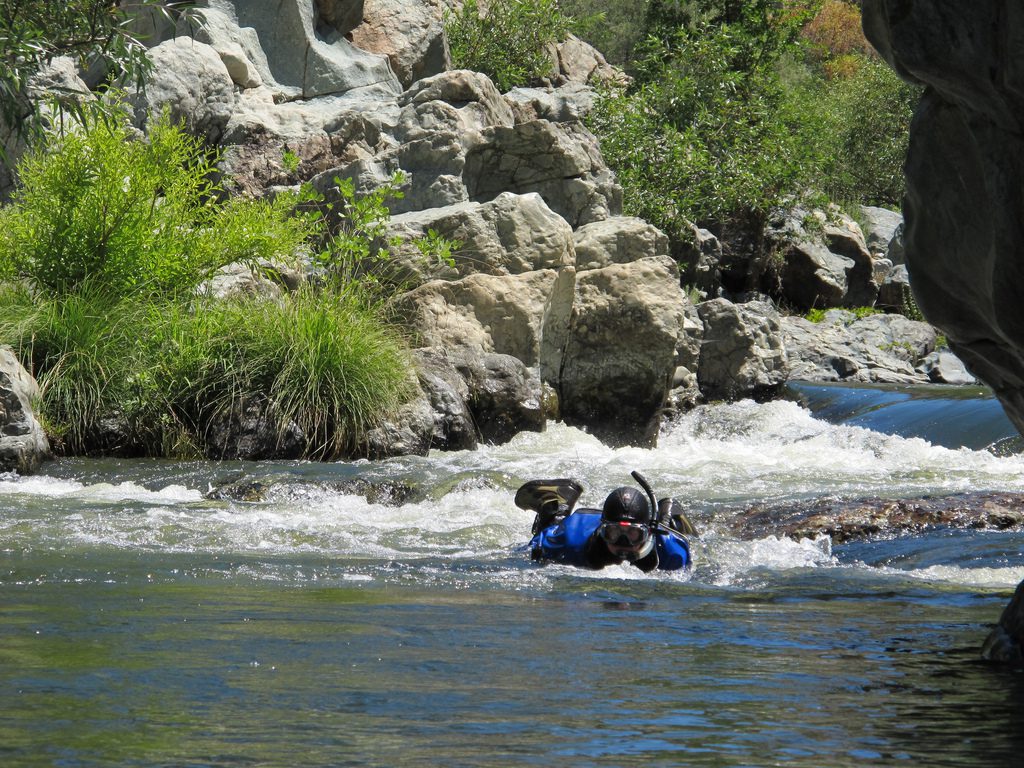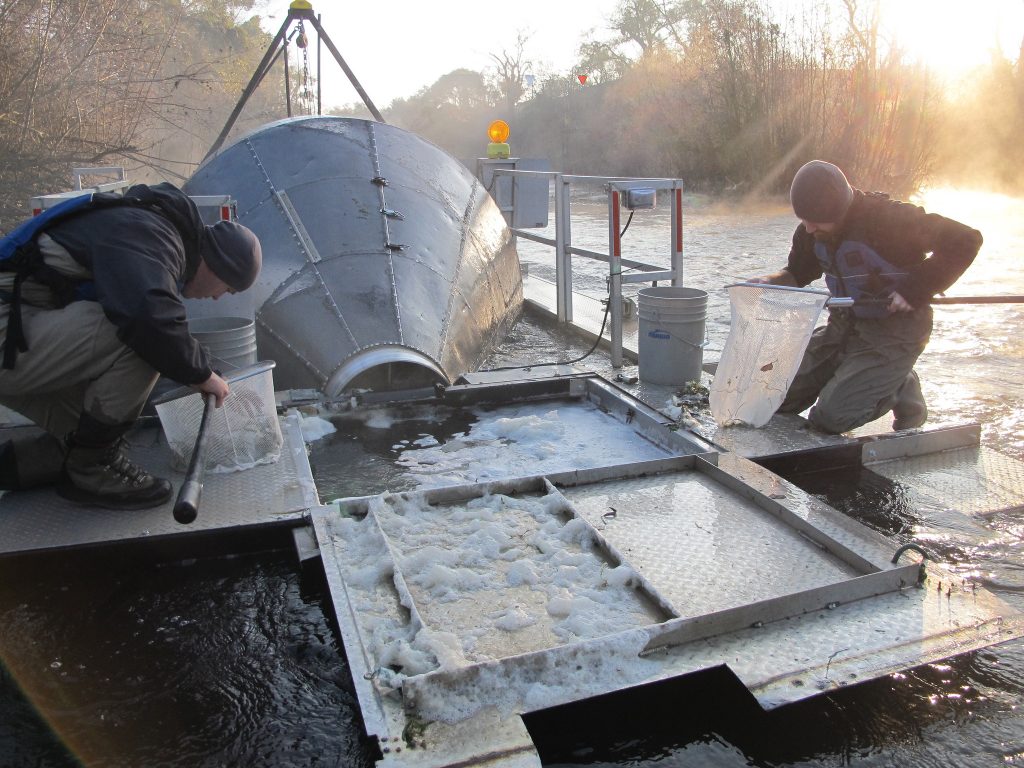


The Stanislaus River Research and Monitoring Program is the most comprehensive and longest running salmon and steelhead monitoring program in California’s San Joaquin Basin. Initiated by FISHBIO personnel in 1993 for the Oakdale and South San Joaquin Irrigation Districts and Tri-Dam Project, the program’s suite of ongoing monitoring activities tracks the abundance, distribution, migration characteristics, and habitat use of salmon and steelhead trout. The project also seeks to determine the effects of reservoir operations and the highly altered channel geometry (which has experienced gravel extraction, levee construction, and woody debris removal) on the fish and wildlife populations in the Lower Stanislaus River.

FISHBIO has designed and continues to implement multiple study elements, including snorkel, seining, electrofishing, and DIDSON surveys; radio and acoustic tracking of salmon and predatory species; an adult fish counting weir with an infrared monitoring system (Vaki Riverwatcher); redd surveys; and rotary screw trap monitoring. We have also conducted meso- and microhabitat mapping and modeling (which includes flow velocities, bathymetry and discharge), and monitor water quality parameters such as water temperature, dissolved oxygen, turbidity, and conductivity. FISHBIO personnel are currently investigating how fish respond to flow regimes and physical habitat features at five study reaches on the Stanislaus River to inform water resources best management practices to improve fish habitat and fish populations. The success of these projects has depended on our team members establishing trusted relationships with landowners to access private property, and working in close coordination with various state, federal, and private agencies to expeditiously obtain numerous research permits for salmon and steelhead.
Peterson, M.L., D.J. Lee, J. Montgomery, M. Hellmair, A. Fuller, and D. Demko. 2020. Stability in reproductive timing and habitat usage of Chinook salmon across six years of varying environmental conditions and abundance. Fisheries Management and Ecology 2020;00: 1–18. DOI: 10.1111/fme.12421
Pilger, T., M. Peterson, D. Lee, A. Fuller, and D. Demko. 2019. Evaluation of long-term mark-recapture data for estimating abundance of juvenile fall-run Chinook salmon on the Stanislaus River from 1996 to 2017. San Francisco Estuary and Watershed Science 17. DOI: 10.15447/sfews.2019v17iss1art4
Peterson, M.L., A.N. Fuller, and D. Demko. 2017. Environmental factors associated with the upstream migratory activity of fall-run Chinook salmon in a regulated river. North American Journal of Fisheries Management 37: 78-93. DOI: 10.1080/02755947.2016.1240120